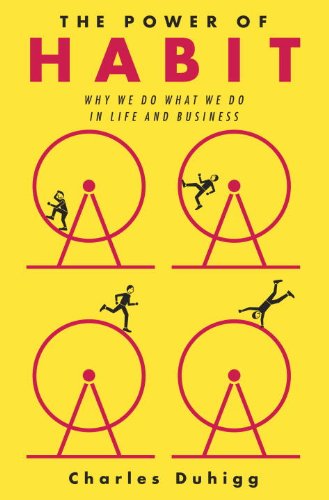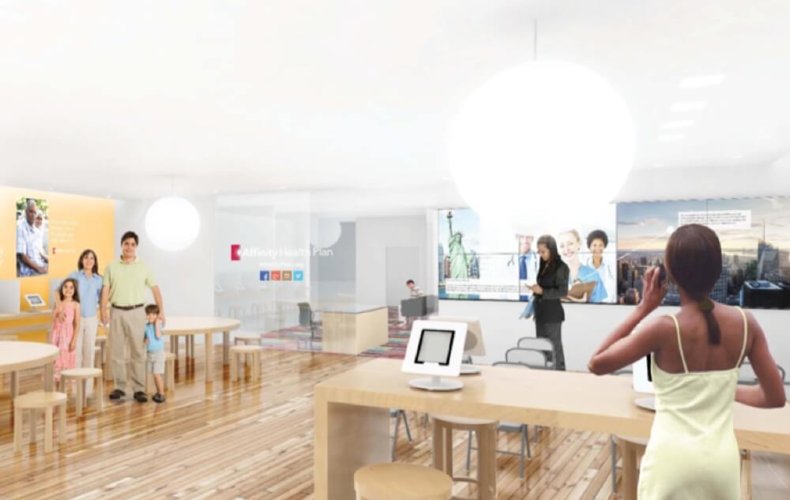My Quantified Self
2013 was a big year for me. I resigned as Chief Innovation Officer of a major insurance plan at the end of 2012 to pursue what I consider to be the culmination of things I have been working on for well over a decade. I call this Health Model Innovation. My technical definition for it is to develop profitable and sustainable business models by creating and realigning the activity systems that improve member experience, boost provider performance, and enable payer cost control. Simply put, my goal is drive start-up businesses and new product lines that create disruptive change in the healthcare space.
This alone will be a big challenge for me in 2013. But I also need to save some time focusing on my personal health. That’s why in 2013 I am publicly challenging myself to exercise regularly and validating my journey through verifiable data. That means I’m recording the exercise that I do so that I have the data about my progress. Based on Wired magazine’s Thomas Goetz and his work on the “quantified self”, I will be using several tools to reach health goals and track my progress.
 So you all know, I am fully aware that no one besides myself and my wife and child care about this endeavor – but my hope is that my fear of public shaming for not sticking to my guns pushes past my desire to take a nap or procrastinate. Moreover, I want this to be a sustained effort. I am a big believer in the power of habit, so I am trying to re-establish a good habit of daily exercise through the combination of incentives and dis-incentives – and a little bit of fun along the way.
So you all know, I am fully aware that no one besides myself and my wife and child care about this endeavor – but my hope is that my fear of public shaming for not sticking to my guns pushes past my desire to take a nap or procrastinate. Moreover, I want this to be a sustained effort. I am a big believer in the power of habit, so I am trying to re-establish a good habit of daily exercise through the combination of incentives and dis-incentives – and a little bit of fun along the way.
Getting the Data
Nike+ FuelBand
To get the data I want, I need to start with a pedometer. Better yet, an accelerometer. You might be asking, “Kevin, what is the difference between an accelerometer and a pedometer?” Well, from a mechanical standpoint, accelerometers measure vertical acceleration, while pedometers are much simpler and only respond to vertical acceleration. Another difference is around $100 price point.
 So, my accelerometer of choice is the Nike+ FuelBand. Keep in mind, I tested most of the major brands: the FitBit Classic, the BodyMedia FIT LINK, and the Striiv Smart Pedometer. First, I wanted something that was simple. Second, I wanted something that was unobtrusive. Third, I wanted something I would remember to carry with me at all times. For these reasons I settled on the Nike+ FuelBand – however, I am not sure the Nike+ FuelBand is as accurate as the FitBit, as it seems to count movement that I do not consider exercise – like typing up a new BLOG.
So, my accelerometer of choice is the Nike+ FuelBand. Keep in mind, I tested most of the major brands: the FitBit Classic, the BodyMedia FIT LINK, and the Striiv Smart Pedometer. First, I wanted something that was simple. Second, I wanted something that was unobtrusive. Third, I wanted something I would remember to carry with me at all times. For these reasons I settled on the Nike+ FuelBand – however, I am not sure the Nike+ FuelBand is as accurate as the FitBit, as it seems to count movement that I do not consider exercise – like typing up a new BLOG.
In any case, this is what I will be wearing to collect data on my exercise whether I’m doing P90X, running or sweating it out at boot camp in the morning.
Xbox Kinect
Another means to acquire data is using my Xbox Kinect. By now if you are unaware of what these nifty little devices do, you really must get out more. The Xbox Kinect is a motion sensing “camera” that inputs data into the Microsoft Xbox 360 video game console. At its launch in 2010, it set the Guinness World Record for being the “fastest selling consumer electronics device” with 8 million units sold in its first 60 days.
Along with the device though you need a game. I bought the new Nike+ Kinect Training. This game “creates a personalized, dynamic workout program based on your body, performance, fitness goals, schedule, and level of commitment.” You can check it out here. So far I like it.
The Workout
I was an athlete in college, and I am far from that now. I sustained a pretty severe back injury and my flexibility is something I am constantly fighting with. Moreover, I am pretty busy with work and being a father and husband. Finally, I can get bored doing the same thing too long.
So knowing all this – I have opted for a mix of the workouts provided in P90X (although not all of them), the Nike+ Kinect Training Game, riding my bike 1X per week, running 2X per week, and trying to do Yoga 2-3X per week.
Staying Motivated
For me, staying motivated is a mix of incentives and dis-incentives. The dis-incentive part is my public commitment to track and publish the data of my workouts and write about my progress on occasion. Fortunately, my Nike FuelBand publishes the data “auto-magically” for me, as does the Kinect game. I also need to mark things in the – old fashion way – and send a tweet now and again. So if you do not see a tweet now and again about my workouts – send me a not-so-gentle reminder. Finally, I am using some wellness apps to help me set goals, record progress, and win prizes.
RunKeeper

RunKeeper is a mobile app and website that helps keep track of running, walking, biking activities. Since running and riding my mountain bike are part of my regimen, I might as well track them and compare them against my friends. I also gave myself a goal inside of Run Keeper – to run in a 5K race by Feb 23, 2013. I think I may need to push that out a month or so.
There are several useful and cool features that RunKeeper provides. First, I can look for a local 5K to run in. I wanted to select the GATE River Run on March 9th (yes, I know that is past the 23rd) and then I remembered I will be at SXSW in Austin, TX at that time. I will need to keep looking for something that fits my goals and my schedule.

The second useful feature is a training plan. I signed up for the Beginner 5K plan that Mike Deibler M.S., C.S.C.S put together. Sweet!

Finally, I downloaded the iTunes App and uploaded it to my iPhone and iPod Touch that I will carry with me when I run.
Everymove
I also joined Everymove. This is part of the incentive portion of my program. My reasoning is if I am going to exercise anyway, I might as well get some rewards for it. I looked at several of these reward programs – CoolLeaf, ShapeUp, Trim Challenge, and a few more. The idea behind these companies is connecting health and wellness related vendors with consumers in a manner that drives access to discounts through activity. In some cases, they get employer and insurance companies to sponsor and even subsidize “points” that their employees and members earn for healthy behavior. It works well with airlines and hotels, why not health?

Nike Missions
Finally and just for fun, I am going to try out the Nike Fuel Missions. Nike has once again taken things to the next level by integrating their activity tracking products with a game that is powered by the user’s activity. This is something much bigger than Microsoft Kinect. Take a look.
Final Words
So as I get ready to embark on this journey, I ask that you all feel free to keep me honest and motivated. Here is to a healthy and happy new year for all of us.
To your health,
The Team at imagine.GO














 A lot of our health technology is what I consider a “shovel”. It is by technicians for technicians – it is shinny and sturdy, but in and of itself is of no use! Well, this one is not shiny but it is sturdy, and you get the point.
A lot of our health technology is what I consider a “shovel”. It is by technicians for technicians – it is shinny and sturdy, but in and of itself is of no use! Well, this one is not shiny but it is sturdy, and you get the point. Other health technologies are “holes”. They are there and can be used for whatever you want them for. Better than shovels (in fact best created with shovels) holes have usefulness if filled properly.
Other health technologies are “holes”. They are there and can be used for whatever you want them for. Better than shovels (in fact best created with shovels) holes have usefulness if filled properly. Finally, we have Fruit Trees. The value is well understood by both growers (providers) and consumers. They have utility. You forget about the “tree” because you are focused on the sweetness of the fruit. This idea is what we have to aim for. You have to envision your consumer drinking a glass of your orange juice on a sunny morning before they go to work brimming with energy. Yes it took a hole to grow the tree, and yes it took a shovel to dig the hole, but the experience (that lip smacking satisfied customer) is what matters.
Finally, we have Fruit Trees. The value is well understood by both growers (providers) and consumers. They have utility. You forget about the “tree” because you are focused on the sweetness of the fruit. This idea is what we have to aim for. You have to envision your consumer drinking a glass of your orange juice on a sunny morning before they go to work brimming with energy. Yes it took a hole to grow the tree, and yes it took a shovel to dig the hole, but the experience (that lip smacking satisfied customer) is what matters.






